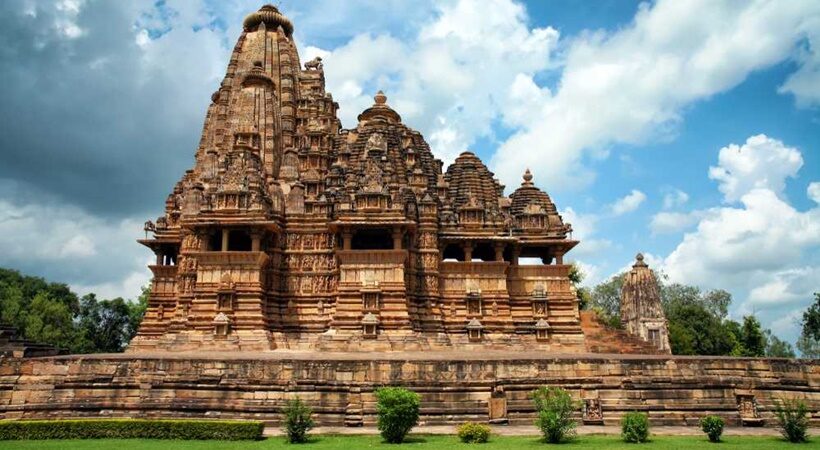Khajuraho is known for its magnificent temples and intricate sculptures across the world. Located in the Chhatarpur district of Madhya Pradesh, the cluster of 23 ornate temples were built by the Chandela Dynasty. The UNESCO site of ‘Khajuraho Group of Monuments’ is famous for its Nagara-Style architecture and graceful sculptures of nayikas and deities. The temples are famous for their craftsmanship that consist of splendid demonstrations of fine sculptures and exceptional architectural skill, making them one of the most stunning UNESCO World Heritage Sites in India. These temples are divided into three groups: Eastern, Western and Southern.
The group of temples of Khajuraho testifies to the culmination of northern Indian temple art, also known as the Nagara style of architecture. Distributed over an area of 6 square km in a picturesque landscape, the temples are rare surviving examples of medieval art of South Asia that display the originality and high quality of Nagara-style temple architecture.

Image Credits: Wiki Commons
The Khajuraho Group of Monuments demonstrates in layout and physical form, the pinnacle of temple architectural development in northern India. Built in sandstone, each temple is elevated from its environs by a highly ornate terraced platform or jagati. On the jagati stands the body, or jangha, whose sanctum is topped by a tower, or shikhara, of a type unique to Nagara style. Here the verticality of the principal spire atop the sanctum is accentuated by a series of miniature spires flanking it that symbolizes Mount Kailasa, the abode of the Gods.

Image Credits: JournalsOfIndia
The temples of Khajuraho are known for the harmonious integration of sculptures with their architecture. All surfaces are profusely carved with anthropomorphic and non-anthropomorphic motifs depicting sacred and secular themes. Sculptures portray acts of worship, clan and minor deities, and couples in the union, reflecting the sacred belief system. Other themes mirror social life through domestic scenes, teachers and disciples, dancers and musicians, and amorous couples.
Organized by the Madhya Pradesh Kala Parishad, Khajuraho Dance Festival is held every year in February. The festival is a one-week affair and highlights the richness of the Indian classical dance forms such as Kathak, Bharatanatyam, Odissi, Kuchipudi, Manipuri and Kathakali with performances by some of the best exponents in the field. These various classical Indian dances are featured against the backdrop of the Chitragupta or Vishwanath Temples. The Khajuraho temple complex offers a son et lumière (sound and light) show every evening. The first show is in the English language and the second is in Hindi. It is held on the open lawns in the temple complex and can be a good opportunity to explore the temple’s history.



















